A few weeks ago we saw the design evolution of the PanOceanian TAGs from their first incarnations to their current ones. Now it’s the turn of their rival, Yu Jing, the Asian giant.
Unlike PanOceania, who stand out for their TAG technology, the StateEmpire especially shines in the design and development of enhanced power armors in such a way that Yu Jing has some of the most iconic Heavy Infantry units in Infinity.
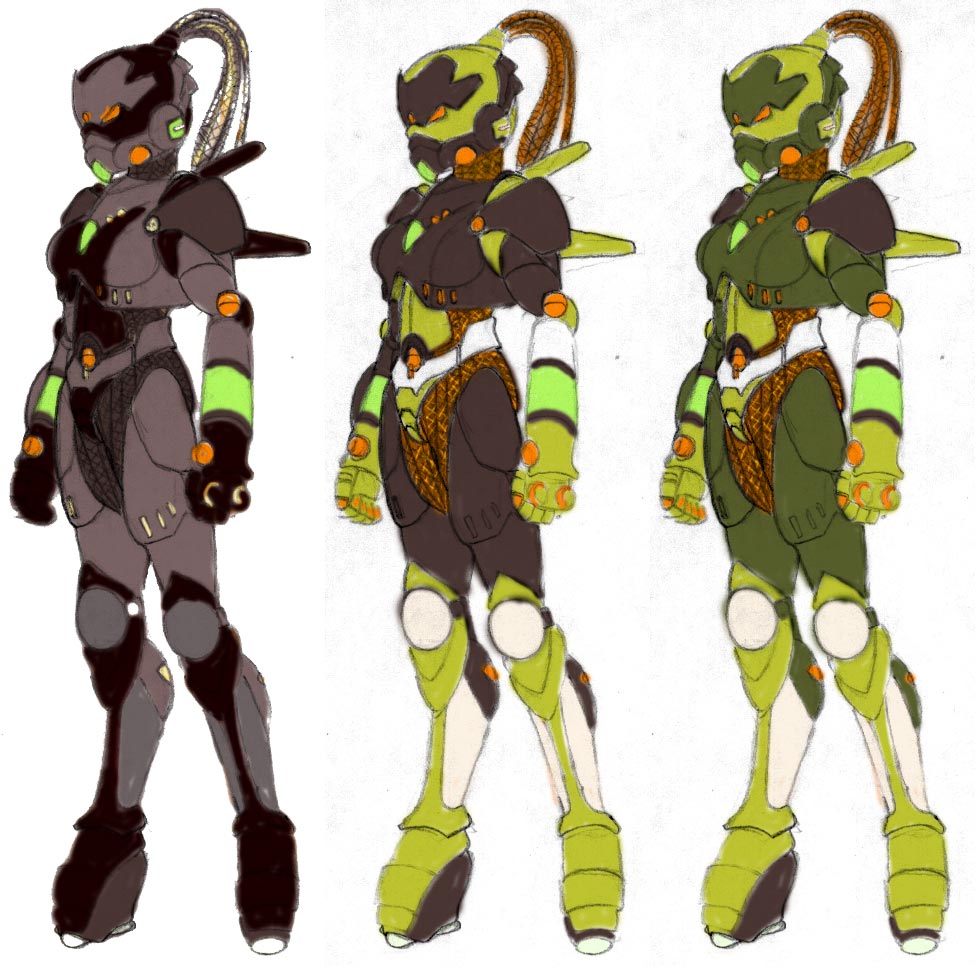
Comprised of Heavy Infantry units, the Invincible Army is the back bone of the Yu Jing military force. For the first design of the Invincible armor—known as Niao Zui, or “Bird Beak,” for its characteristic helmet—we tried to make them stylistically different from their PanOceanian counterparts. The design of the PanOceanian armors stood out for their aerodynamic lines and rounded edges; the Yu Jing armors focused on the Eastern taste for ornate forms, giving the pieces a certain archaic look inspired by the armors of Ancient China.
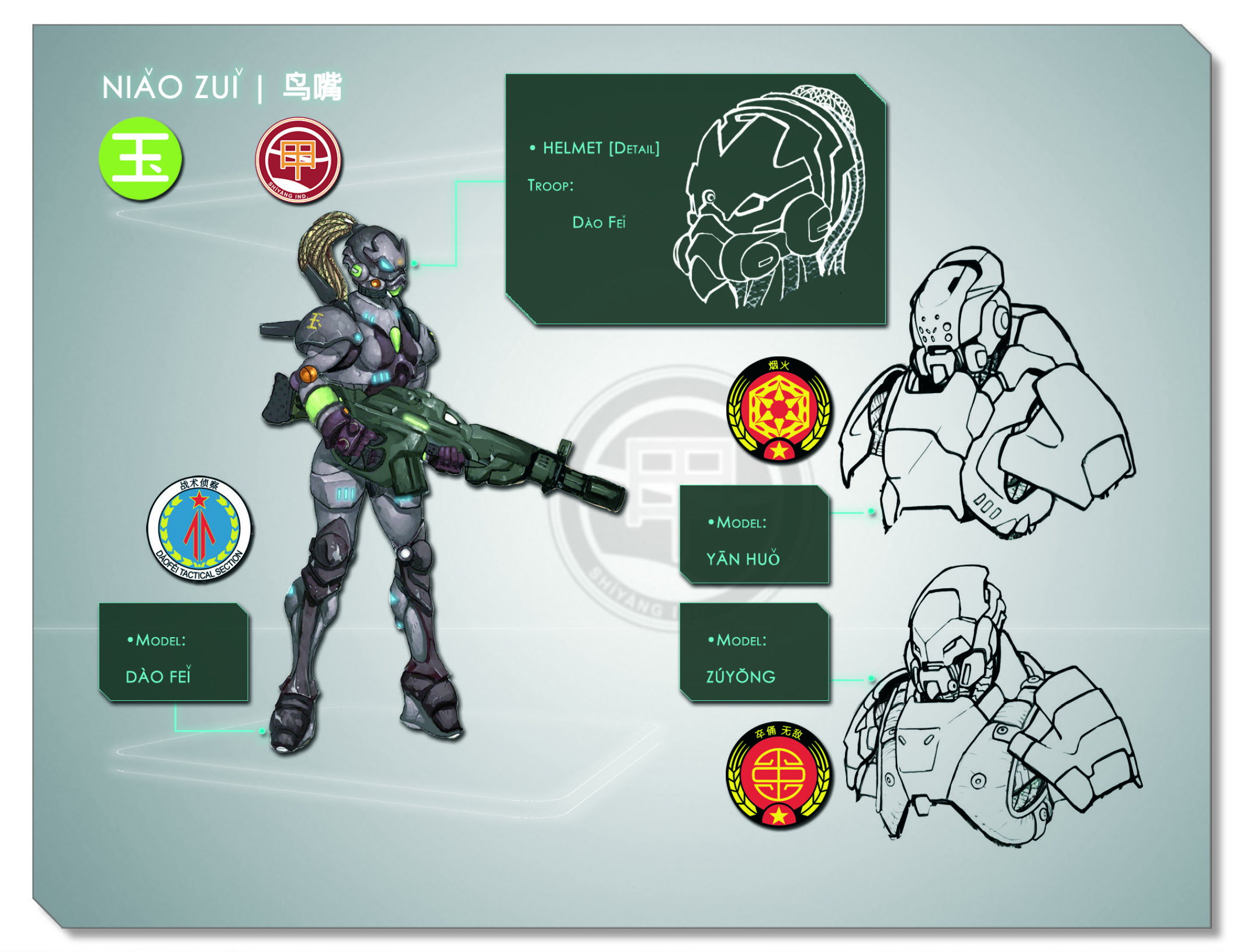
However with the design of the Shàng Jí armor, the most advanced and lightest, a more modern and high-tech look was the objective. But we wanted a look that also could set it apart from its PanOceanian equivalents. A more ergonomic design, with reinforced vertebral zones and very distinctive shoulder pads, set the lines of design that Carlos Torres, CB’s design chief, would repeat with the Zúyong model, the Terracotta Soldiers. This new version, designed for a massive deployment, served as base for all subsequent Yu Jing armors that would be modeled in 3D, replacing or overlaying those base pieces with distinct pieces that visually define each model. From this basic model the Yan Huo reinforced heavy support version was developed, as well as the elegant and sensor-packed Hsien model.
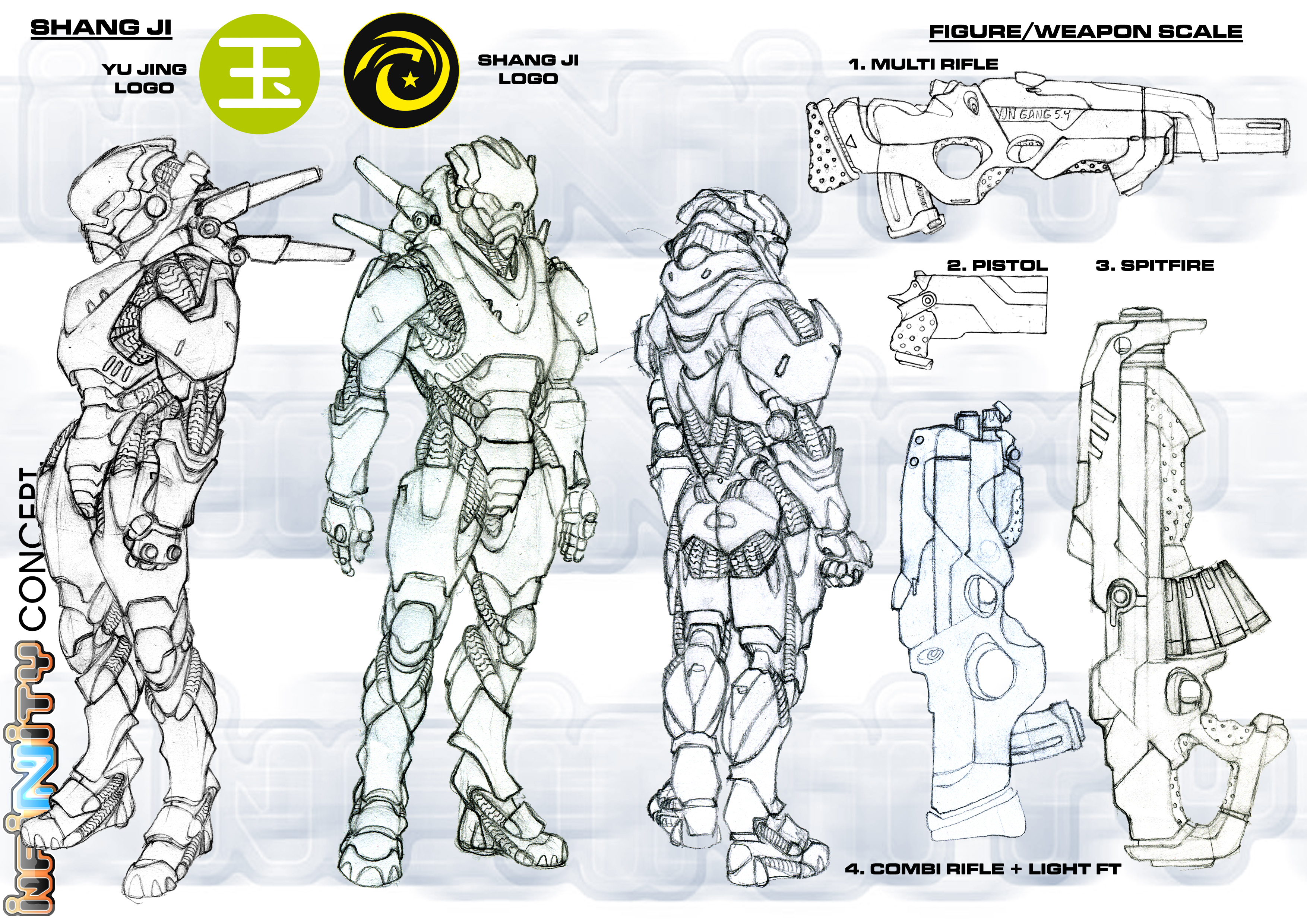
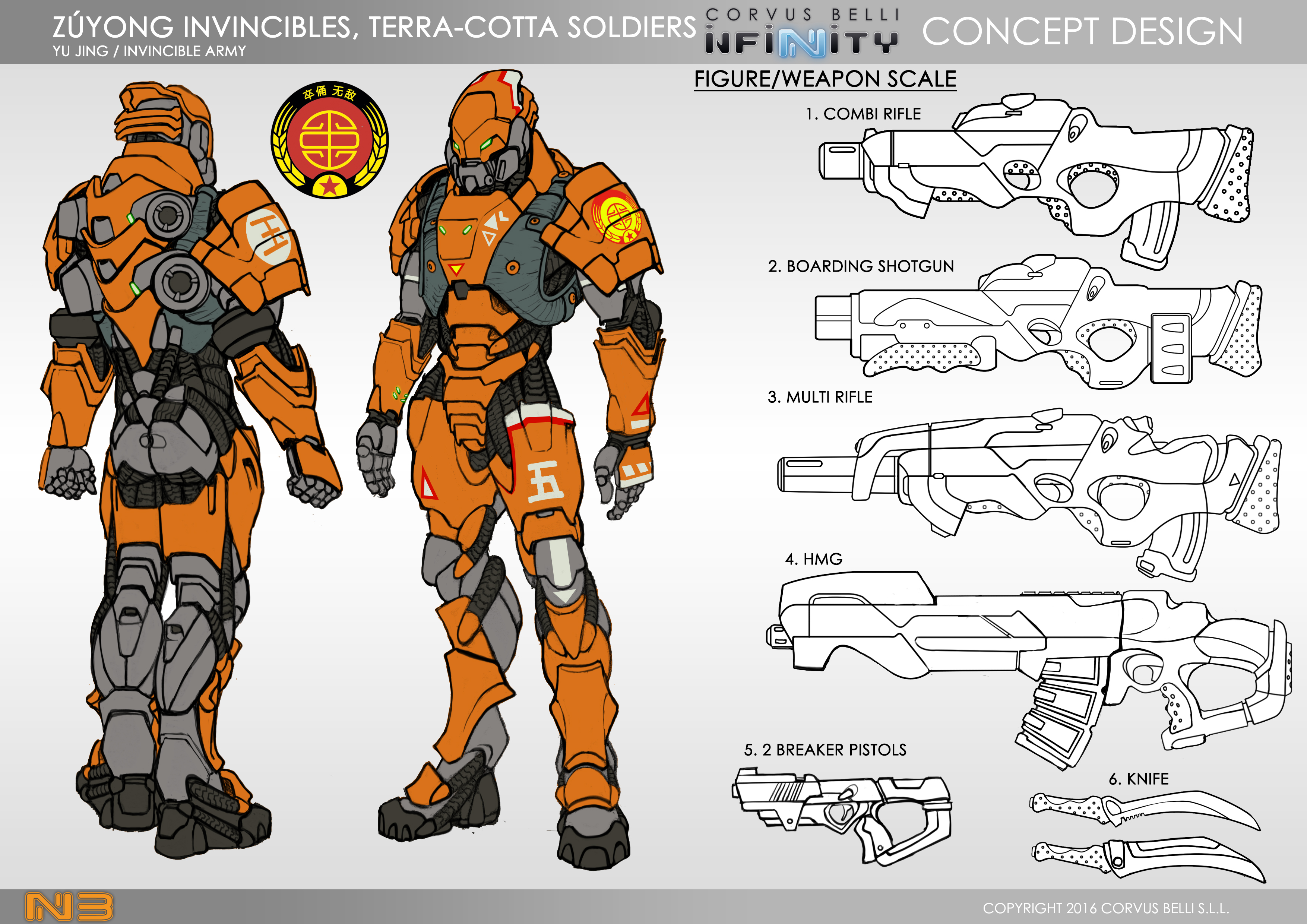
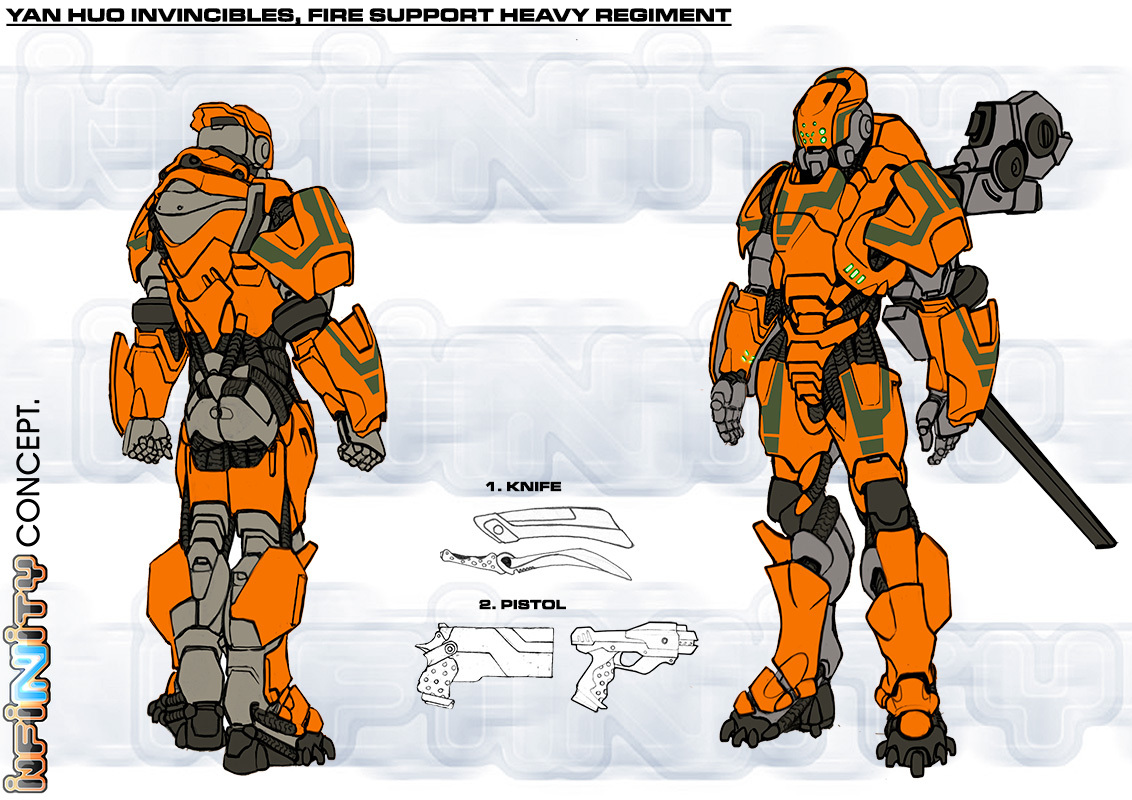
But Yu Jing not only has Heavy Infantry, it also has TAGs, and in this troop category the StateEmpire stands out for having one of the most radical changes within the Infinity range. This is the case of the Guijia, which in its time was known by the nickname “Chicken Legs,” due to its voluptuous lower limbs. It’s not even necessary to point out the changes to this resculpt, as it is evident from its charismatic design that this TAG has seen radical modifications.
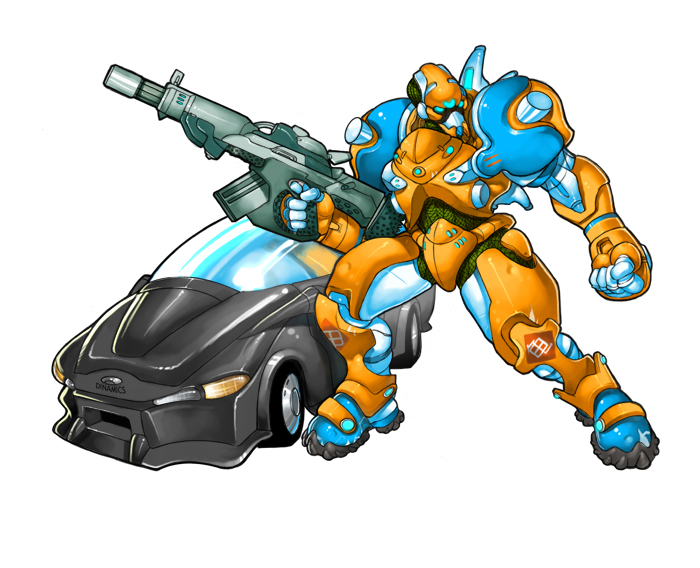
The first version was based on the Landmate, specifically on the “Guges” model, from Masamune Shirow's manga Appleseed. This design was well-liked and fit very well in Infinity's concept of manga esthetics. Back then, we're talking about 2005, it was an original idea. These robust models were perfect to force the visual contrast with the stylized PanOceanian TAG. This way, the Guijia would be seen as a huge combat armor in which the pilot, squeezed into a cabin in the bulky chest, would drive this beast of destruction in contrast to the slender design of the Remote Presence TAG. They do not have a pilot inside, so their conceptual design better matches a humanoid robot. A more stylized canon emphasized this feature, by stressing the fact that there are no crewmembers inside.
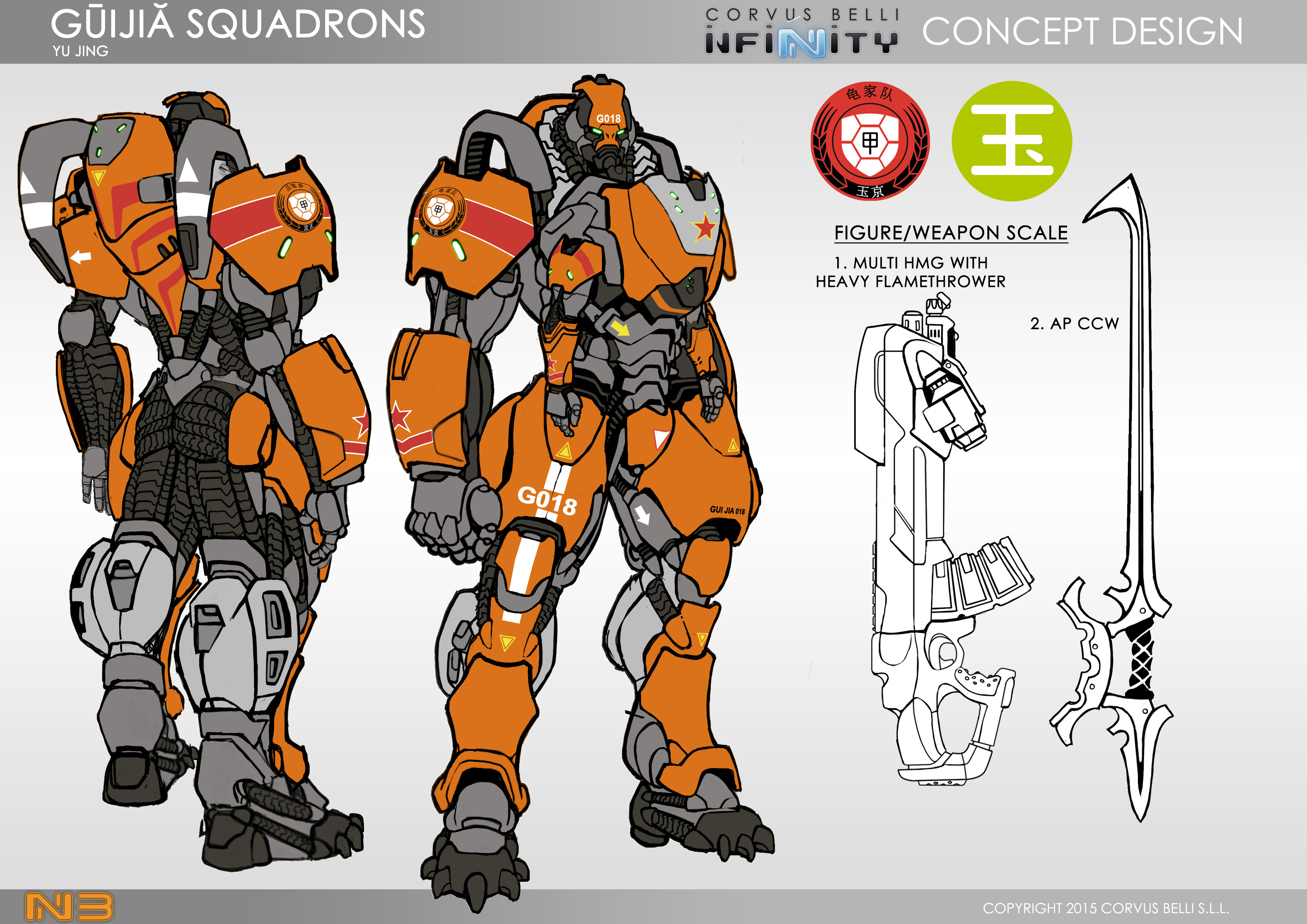
But why was this Guges-style esthetics not kept with the re-sculpture of the Guijia? When it came to bringing about the image change, the decision was to keep the blunt size, but to look for a more heroic and threatening appearance by making it taller. Besides, we have to understand that the round style of the previous version is old-fashioned nowadays. However, we did not want this redesign to lose the strength so indicative of the previous version, and we wanted to keep the appearance of it being a manned war machine.
And that’s as far as we go with Yu Jing today. Even though we have more material that we could talk about for a long while, we will keep that for a future article on Infinity’s Radical Changes. So keep connected!
No comments:
Post a Comment